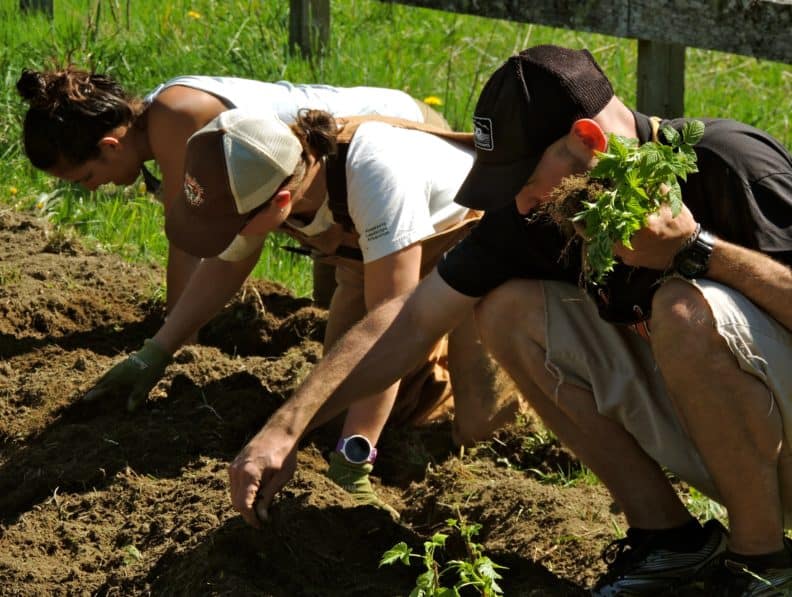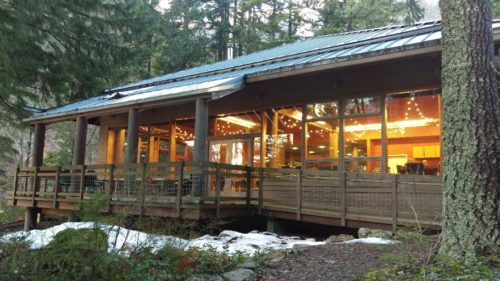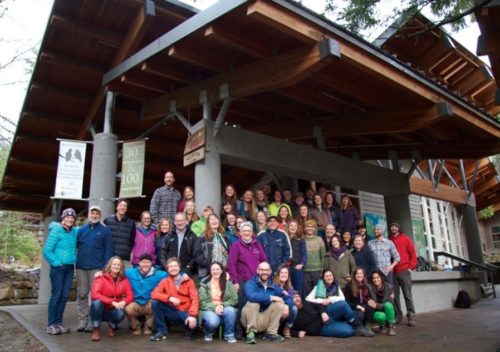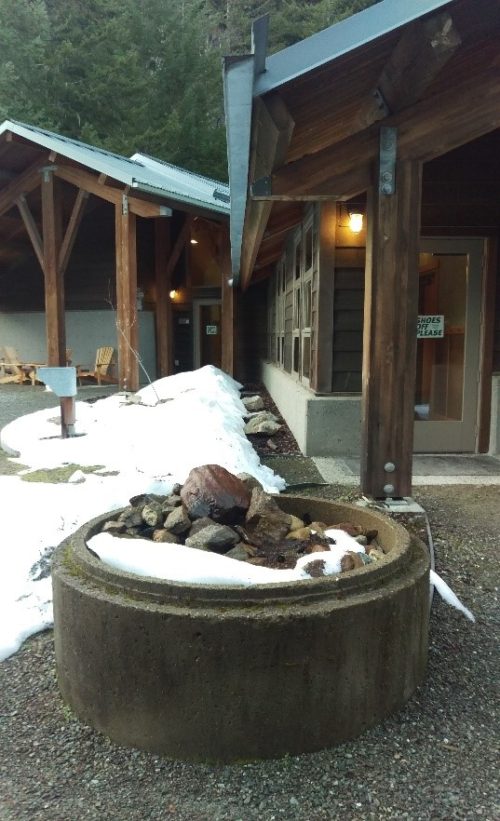
LEED by Example
We are the North Cascades Institute. And if you are reading this blog you are somehow affiliated with or are curious about our organization devoted to environmental education. You may know us through Mountain School, Adult learning programs, Mt. Baker Snow School, Youth Leadership Adventures, Family Getaways, Stewardship Events, Kulshan Creek Programs, our M.Ed. Graduate Program, Skagit Tours or perhaps you stumbled upon us hiking or driving Highway 20 beneath the steep contour of Sourdough Mountain. You may or may not know that our mission is to “conserve and restore Northwest environments through education.” No matter your age, we believe that place-based education in the rain drenched mossy, cascade cut forests or heather dotted, steep rocky alpine landscape makes a lasting impression. Our programs speak for themselves, but you may or not know about our sustainability efforts.
How effective is an organization that does not employ its values on a daily basis? The North Cascades Institute embodies what we believe sustains the vitality of this ecosystem and beyond. Our unique location, one hour from a grocery store and an hour and a half from a hospital, create obstacles that we are always navigating with different paddles.
But to give you a glimpse into how we operate sustainably at the base of the Cascades, let me tell you how we, this community of 50+ people, attempt to tread lightly while serving nearly 5,000 clients at 1200 feet.
Thirty years ago, Saul Weisberg and friends crafted an idea while hiking and climbing the silent, ancient peaks in the North Cascades National Park. The idea was for an educational institution which eventually led to the serendipitous construction of the Environmental Learning Center 11 years ago. The arduous details aren’t as important as the intention behind them. Change through education.
Our Buildings
The Environmental Learning Center is LEED Silver certified by the U.S. Green Building Council based on our level of sustainability! LEED certification is awarded to buildings that are efficient, use less energy and water and create less impact on the environment both in the construction process and during operation. Our foundation is one of recycled structures upon which we expanded.
- We respect our environment! Most of our buildings are built upon preexisting foundations for minimal impact to native vegetation and landscape, which still thrives today. Our campus is built into the landscape, working with naturally occurring barriers, slopes, and light.
- We support local economies! Local and regional materials were used in construction of our facility.
- We recycle! Salvaged wood was used to craft the front gate, the maple flooring in one of the classrooms and the heart pine flooring in staff housing.
- We care about you! The woodwork inside of the buildings at the Learning Center does not contain composite wood like particle board or plywood that can contain formaldehyde in glues.
- We used the natural landscape to our advantage in the construction of the buildings on campus. Windows are south and west facing when possible to absorb as much light as possible.
How Do We Conserve Energy?
- LED lighting now illuminates our dining hall.
- Hydronic radiant floor heating is used in classrooms and the library, greatly reducing heat loss throughout the day.
- Our lodges have energy efficient windows and insulation.
- Each room in the lodges has its own temperature control so no energy is wasted heating rooms not in use.
- Natural light was prioritized in building design when possible to eliminate the need for lights during most times of the year.
- Many of our lights are timed to turn off automatically.
- The office is designed to harness the heat of the sun reducing the need to use more energy to heat the building.

Staff and Graduate students at the North Cascades Institute. Photo taken by Jessica Haag
Community Building
- Our Diversity Team works to increase program accessibility for all people living in this region.
- We are involved with stewardship events in and around Skagit River communities, especially with schools that attend Mountain School.
- We are committed to working with the National Park and others partners to increase educational and outreach opportunities.
Foodshed:
- 70% of produce served in our dining hall is either local or organic and we are currently working hard to increase this number. Local is defined as a 100 mile radius.
- We buy food from local businesses like Blue Heron Farm, Burlington Flour Mill, Cloud Mountain Farm, Plough Horse Farm and Small Wood Farm to name a few.
- We are currently tilling the land at our farm house in Marblemount to grow as much produce as possible for the 2016 Graduate students on their summer adventures. In the not so distant future our farm will provide produce to the Learning Center for meals.
- Our chefs prepare seasonally appropriate food.
- During Mountain School, we don’t serve meat due to the sheer volume of guests and due to the environmental impact of raising meat. The money saved by not purchasing sustainably produced meat for roughly 3,000 students can be used to support our local farmers.
- We care about the health of our staff and guests and our chefs prepare delicious, nutritious meals for all of our programs.
- Two Earth Tubs convert our food waste into compost that is sent home with Mountain School students to use in their school gardens, in our garden at the Blue House Farm, and in personal gardens of staff.
Transportation:
- A 49 miles per gallon Prius is part of our vehicle fleet used for programs down river.
- Our Sedro Woolley staff consistently carpool and are also taking steps towards purchasing an office bicycle which can be used to run errands and visit local establishments on lunch breaks.
- Staff and graduate students living off campus commute by foot, bike, and carpool.

Water:
- To prevent runoff and erosion, rockery areas and splash pads are strategically placed around campus beneath roof of buildings.
- Electricity at the Learning Center is powered with hydroelectricity.
A tracking tool constructed by members of our Green Team with metrics like transportation, energy, waste, food, water and community helps us raise awareness about ways we can improve upon sustainability and celebrate successes. Sustainability is a priority and we are constantly thinking of creative ways to increase our sustainability and decrease our footprint on this ecosystem. Visit our website for more details or come on up to visit the Environmental Learning Center for a tour!


